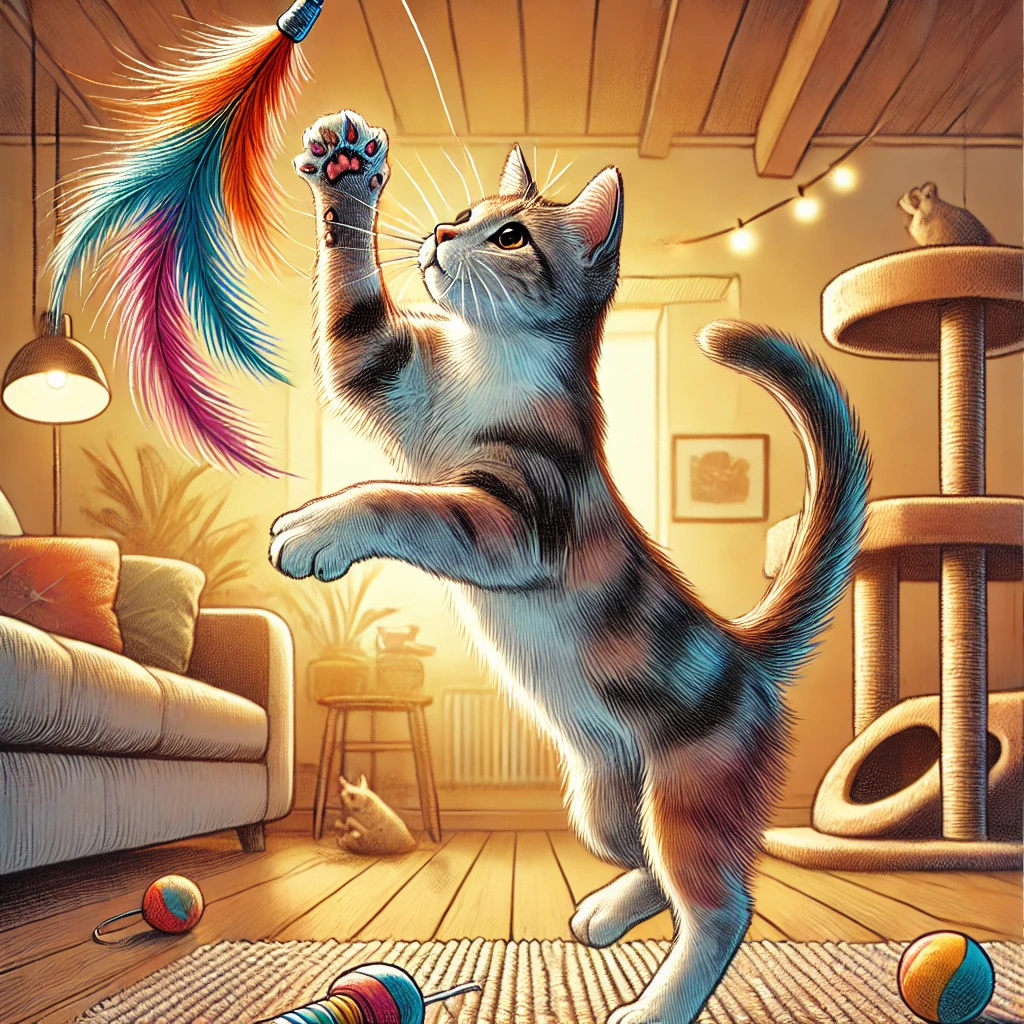Unleash your cat’s potential by understanding the importance of play in cat behavior.
Introduction
Have you ever watched your cat pounce on a toy mouse or chase after a feather wand with unbridled enthusiasm? Play isn’t just fun and games for our feline friends—it’s a vital component of their development and well-being. Understanding the importance of play in cat behavior can help you foster a happier, healthier relationship with your furry companion.
Play as Practice for Hunting Skills
Tapping into Natural Instincts
Cats are natural-born hunters. Even if your indoor cat has never seen a real mouse, the hunting instinct is deeply ingrained. Recognizing the importance of play in cat behavior helps satisfy these instincts.
- Stalking and Pouncing: Play allows cats to practice stalking, chasing, and pouncing—behaviors essential for hunting in the wild.
- Coordination and Reflexes: Interactive play improves their coordination, agility, and reflexes.
- Mental Stimulation: Engaging in hunting-like activities keeps their minds sharp and prevents boredom.
Simulating the Hunt at Home
By providing toys that mimic prey, you can satisfy your cat’s predatory instincts.
- Feather Wands: Mimic the movement of birds.
- Laser Pointers: Simulate quick-moving insects or small animals.
- Toy Mice: Encourage stalking and pouncing behaviors.
Learn more about selecting the right toys.
Social Development Through Play, Especially in Kittens
Learning Important Social Skills
For kittens, play is crucial for learning how to interact with others.
- Bite Inhibition: Kittens learn how to control the force of their bite while playing with littermates.
- Body Language: Play helps them understand feline communication cues.
- Hierarchy Establishment: Through play, kittens figure out social rankings and appropriate behaviors.
Read about kitten socialization.
Strengthening Bonds with Humans
Interactive play strengthens your bond with your pet.
- Trust Building: Regular playtime builds trust and affection.
- Understanding Preferences: Learn what types of play your cat enjoys most.
- Positive Associations: Associate yourself with fun and enjoyment in your cat’s mind.
Benefits of Play for Stress Relief and Exercise
Physical Health
Understanding the importance of play in cat behavior contributes to their physical well-being.
- Weight Management: Active play helps prevent obesity.
- Muscle Tone: Keeps muscles strong and joints flexible.
- Cardiovascular Health: Increases heart rate and promotes overall fitness.
Mental Well-being
Play is a natural stress reliever for cats.
- Anxiety Reduction: Helps alleviate stress and anxiety, especially in indoor cats.
- Behavioral Issues: Reduces undesirable behaviors like scratching furniture or excessive meowing.
- Environmental Enrichment: Keeps their environment stimulating and engaging.
Discover environmental enrichment ideas.
Different Play Styles and Appropriate Toys
Understanding Your Cat’s Play Style
Every cat is unique, and understanding their preferences enhances playtime.
- The Chaser: Prefers to chase moving objects.
- The Pouncer: Enjoys stalking and pouncing.
- The Climber: Loves vertical play.
- The Fetcher: Brings toys back to you.
Selecting Safe and Engaging Toys
Ensure the toys you choose are safe and suitable.
- Avoid Small Parts: Prevent choking hazards by avoiding toys with small detachable pieces.
- Durable Materials: Choose toys made from sturdy materials.
- Variety: Rotate toys to keep your cat interested.
Tips for Engaging Your Cat in Healthy Play
Schedule Regular Playtime
Consistency is key.
- Set Aside Time Daily: Aim for at least two 15-minute play sessions each day.
- Understand Their Rhythm: Cats are crepuscular—most active at dawn and dusk.
Mimic Prey Behavior
Make playtime more enticing.
- Move Toys Like Prey: Mimic the erratic movements of prey animals.
- Let Them Catch the Toy: Allow your cat to successfully “hunt” to prevent frustration.
Encourage Independent Play
When you’re not available, provide options for solo play.
- Interactive Toys: Toys that move or make noise on their own.
- Puzzle Feeders: Combine mealtime with mental stimulation.
Create a Safe Play Environment
Ensure the play area is safe and comfortable.
- Remove Hazards: Keep breakable items out of reach.
- Provide Space: Give your cat room to run, jump, and climb.
Conclusion
Regular playtime isn’t just an optional extra—it’s a cornerstone of feline health and happiness. By understanding the importance of play in cat behavior, you can provide enriching experiences that cater to your cat’s natural instincts and needs. Whether it’s simulating a hunt, engaging in interactive games, or providing toys for independent play, your efforts will contribute to a stronger bond and a more fulfilling life for your feline friend.






